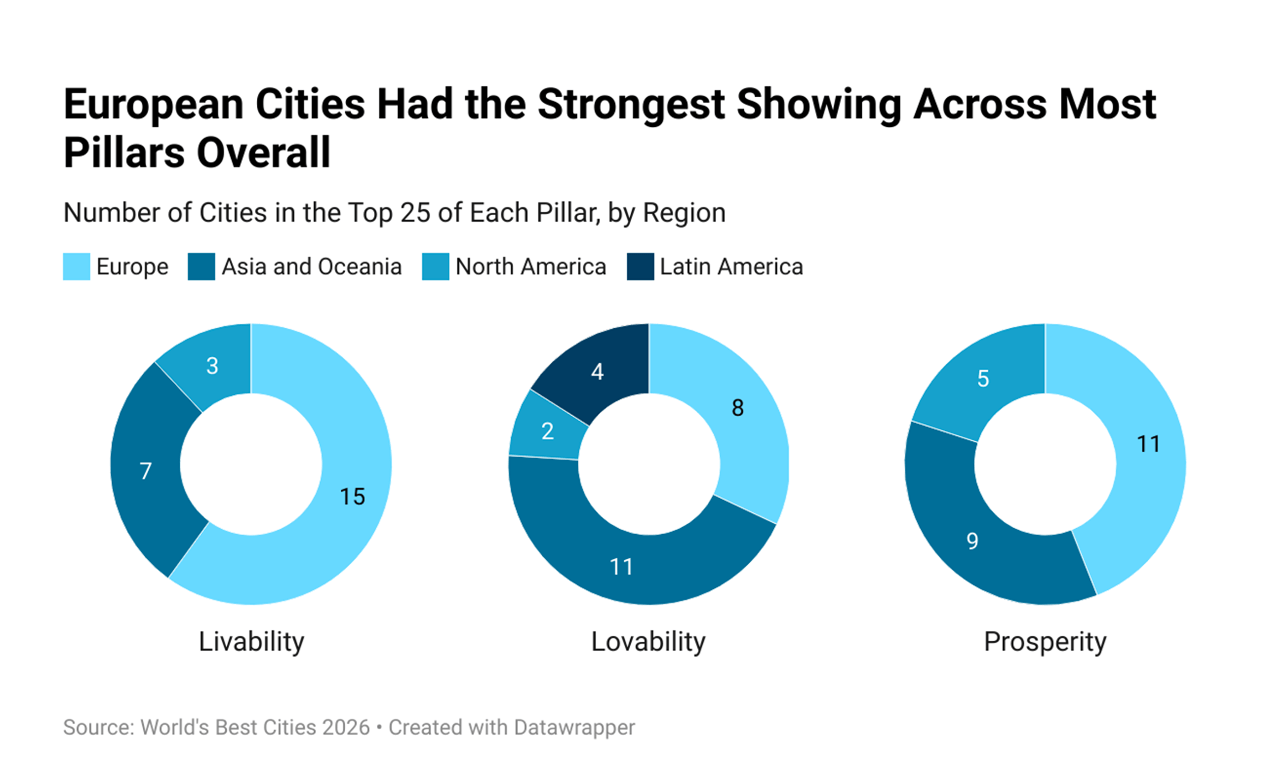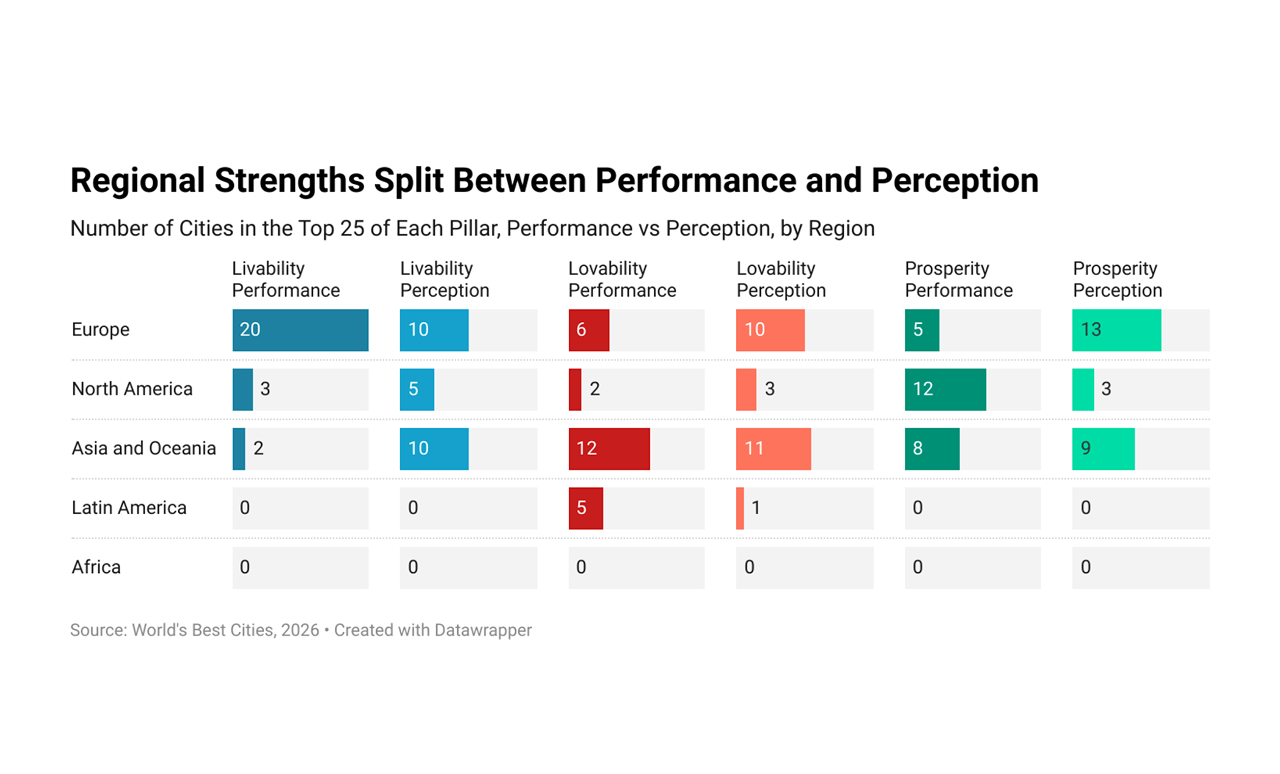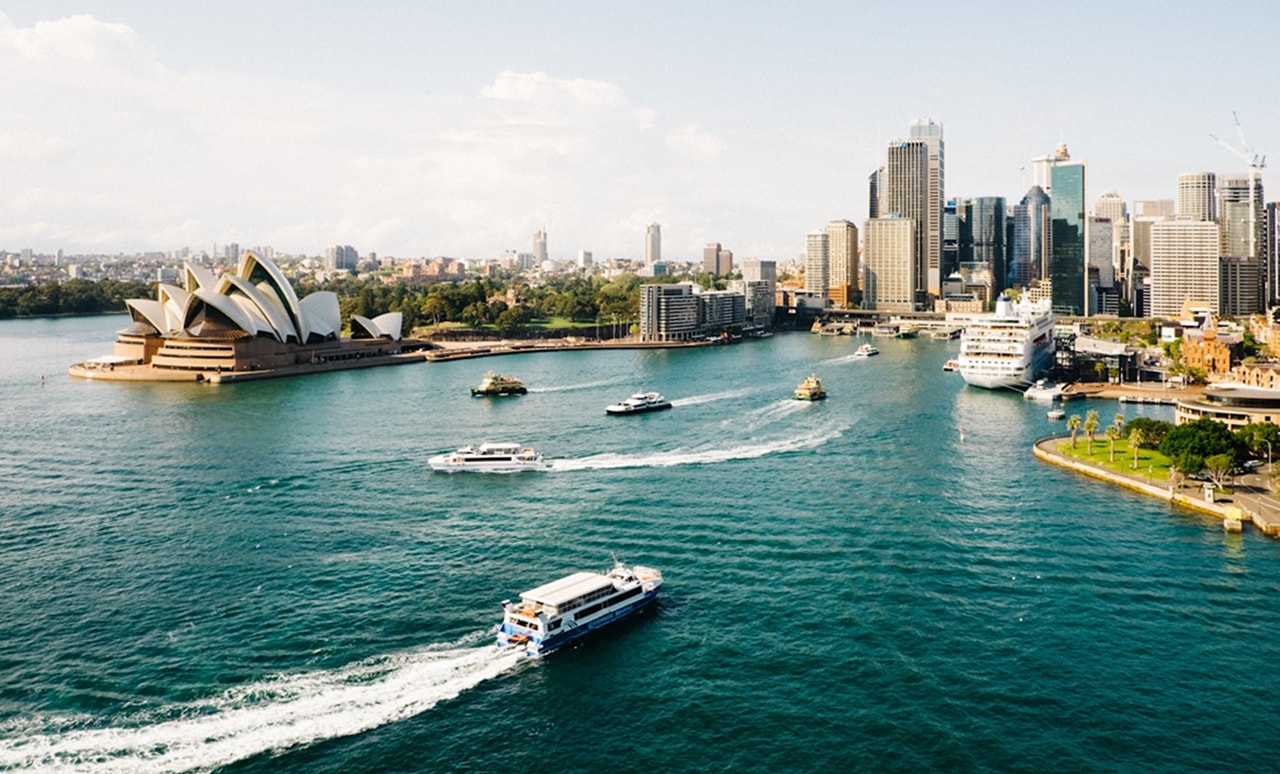September 19, 2025
The world's most livable, lovable, and prosperous cities: A regional breakdown of performance vs. perception
Ekeme Afia, Research Analyst
September 19, 2025
Ekeme Afia, Research Analyst
September 19, 2025
Ekeme Afia, Research Analyst
Ask someone to name the world’s best city and you’ll likely hear Paris, Tokyo, or New York. But does global fame reflect genuine quality of life, economic vitality, or cultural magnetism? Or are we all just gravitating toward the same handful of superstar brands?
The answer depends on whether you’re measuring reality or reputation – and the gap between the two reveals something crucial about how cities succeed in the 21st century.
Each year, the World’s Best Cities ranking measures three fundamental pillars – Livability, Lovability, and Prosperity – by integrating hard performance data with global perception. The performance data tracks everything from gross regional product and education levels to green space and infrastructure quality. The perception data, gathered through an annual survey with Ipsos, captures how people around the world actually feel about the best places to live, visit, and do business.
To understand which regions dominate, we examined the Top 25 cities globally in each pillar. What emerged was a tale of two rankings: one shaped by measurable outcomes, the other by global imagination. And the difference between them matters more than most cities realize.
When you look at the Top 25 cities across all three pillars combined, one region stands decisively apart. Europe claims 15 of the world’s most livable cities, 11 of the most prosperous, and 8 of the most lovable. No other region comes close to that breadth.

European cities don’t just outperform in volume – they lead in balance. Paris ranks #1 in Livability, demonstrating how a city can combine world-class transit, cultural depth, and urban sustainability into a coherent whole. London sits at #3, Rome at #5, Barcelona at #6. These aren’t accidents of geography or wealth. They’re the result of decades of investment in infrastructure, safety, and public space that translate into measurable quality of life.
Even in Prosperity, where North American and Asian powerhouses dominate the conversation, Europe holds its ground. London ranks #1 overall in the global ranking, while Paris lands at #5, proving that economic dynamism doesn’t have to come at the expense of livability. The region’s strength lies in consistency: strong transit systems, safe streets, and cultural richness that register in both hard data and soft reputation.
By contrast, North America shows up with just three cities in Livability’s top 25, two in Lovability, and five in Prosperity. New York, Los Angeles, and Toronto carry the torch for the region, but the numbers expose a structural reality: North American urbanism prioritizes different outcomes, and those trade-offs show up in the data.
Meanwhile, Asia and Oceania flex their strength in Lovability, with Tokyo, Seoul, Singapore, and Sydney drawing global admiration for their cultural magnetism, lifestyle innovation, and international visibility. These cities have mastered the art of aspiration – they make people want to be there, even if livability metrics tell a more complicated story.

Here’s where it gets interesting. Separate performance from perception, and the regional hierarchy shifts dramatically.
In the performance data – the actual, measurable outcomes – the numbers are decisive. Europe dominates Livability with 20 of the Top 25 highest-performing cities. Asia and Oceania lead Lovability with 11 cities in the top tier, while Latin America leapfrogs North America in this pillar entirely. And North America? It claims the Prosperity crown with 12 cities in the top 25, underscoring its economic might even as other dimensions lag.

But look at the perception data – where people around the world rank where they most want to live, visit, and do business – and those regional distinctions nearly vanish. Tokyo, London, Paris, and New York rise to the top across all three pillars. People see the same global icons as simultaneously great places to live, to love, and to work, regardless of what the performance metrics actually say.
This isn’t a fluke. The perception data from Ipsos reveals that people’s ideas of livability, lovability, and prosperity are highly correlated, with coefficients above 0.9 across all three pillars. Translation: if someone believes a city is a great place to live, they almost certainly believe it’s a great place to visit – and a great place to find opportunity. The halo effect is real, and it’s powerful.
So while performance data highlights regional specialization – Europe as highly livable, Asia and Oceania as highly lovable, North America as highly prosperous – perception data tells a simpler, stickier story. The global imagination gravitates toward a few superstar cities that appear to do it all, whether they actually do or not.

For cities, this divergence between performance and perception isn’t academic – it’s strategic. Performance defines how well a city actually works: the strength of its economy, the reliability of its infrastructure, the integrity of its institutions. Perception defines how the world chooses to engage with it: where people decide to move, visit, invest, and build their futures.
The most successful cities understand both dimensions and work deliberately to close the gap. They don’t just build better transit or safer neighborhoods – they communicate those improvements in ways that shift global sentiment. They don’t just attract investment – they create the livability conditions that make that investment sustainable.
The first step is clarity: knowing where you stand today, not just in the data but in the global conversation. How do you perform compared to peer cities? And perhaps more importantly, how are you perceived? Because in a world where reputation travels faster than results, the cities that win are those that can deliver on both fronts.
The world’s best cities don’t just live well, inspire deeply, or build wisely. They do all three – and they make sure the world knows it.